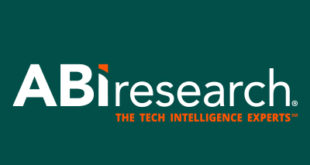 How integrating Learnerships into your WSP and ATR can elevate your competitive edge
How integrating Learnerships into your WSP and ATR can elevate your competitive edge
Strategic business planning in South Africa needs a forward-thinking approach so when it comes to cultivating a skilled workforce, there is one action that repeatedly delivers – the inclusion of learnerships into Workplace Skills Programmes (WSP) and Annual Training Reports (ATR).
“Companies are constantly seeking ways to remain competitive and future-ready,” says Rajan Naidoo, Managing Director of EduPower Skills Academy. “One of the best ways to achieve this is to leverage learnerships in their WSP and ATR. This not only contributes to the creation of a robust talent pipeline, it also unlocks substantial financial benefits in the form of mandatory and discretionary grants.”
Understanding WSP and ATR
WSP and ATR are integral components of the Skills Development Act in South Africa. The WSP outlines a company’s skills development needs and strategies, while the ATR serves as a report on the actual training undertaken.
“These documents are fundamental for companies seeking to align their workforce with industry demands and government regulations,” explains Naidoo.
The Role of Learnerships
Tried and tested, learnerships are one of the best mechanisms for building a talent pipeline. These work-based learning programmes integrate structured theoretical learning with practical, on-the-job experience.
“Learnerships greatly enhance the employability of individuals and with the skills they gain over the 12 months of the programme, graduates can add value from day one,” he adds. “By including learnerships in the WSP and ATR, businesses can, therefore, achieve a multi-faceted approach to employee development that benefits both the business and its workforce.”
Creating a Talent Pipeline
Another advantage of incorporating learnerships into your WSP and ATR is that fact that this will allow companies to identify and nurture individuals with potential, moulding them into skilled and competent professionals. “This provides a mechanism to address current skills gaps and ensures the sustainable flow of qualified employees to meet evolving industry needs,” states Naidoo.
Financial Benefits
Beyond the intrinsic value of cultivating talent, integrating learnerships into WSP and ATR is a strategic move that also pays off financially. Companies can tap into the government incentives in the form of Mandatory and Discretionary Grants available through the Skills Development Levies Act, enhancing their return on investment in skills development.
- Mandatory Grants: Companies required to pay skills levies are eligible for mandatory grants when they submit their WSP and ATR. By including learnerships in these plans, businesses increase their chances of qualifying for a higher percentage of the grant. This serves as a direct financial incentive for investing in learnerships.
- Discretionary Grants: In addition to mandatory grants, companies may qualify for discretionary grants based on their commitment to promoting skills development. By aligning their learnerships with the strategic objectives of the relevant SETA, businesses can access additional funding, amplifying the financial benefits associated with talent development.
Strategic Considerations for Success
Naidoo advises companies that want to maximise the impact of learnerships in their WSP and ATR to adopt a strategic approach that includes the following:
- Alignment with Organisational Goals: Ensure that learnerships are aligned with the overall strategic goals and skills development needs of the company.
- Partnerships with SETAs: Collaborate closely with relevant SETAs to identify priority areas and secure discretionary grants that support targeted skills development initiatives.
- Effective Implementation: Work with an accredited and reputable training provider that will implement your learnerships effectively, providing a balance between theoretical knowledge and practical experience to create well-rounded professionals.
- Monitoring and Evaluation: Regularly monitor and evaluate the progress and outcomes of learnership initiatives, adjusting strategies as needed to optimise results.
He emphasises that by strategically incorporating learnerships into the WSP/ATR framework, companies establish the groundwork for long-term success. “As organisations prioritise learnerships aligned with their business goals, they not only augment their eligibility for government incentives but also pave the way for a future-ready workforce. This progressive approach simultaneously contributes to addressing unemployment and inequality in South Africa,” Naidoo concludes.
 ..:: AUTO REPORT AFRICA ::..
..:: AUTO REPORT AFRICA ::..




